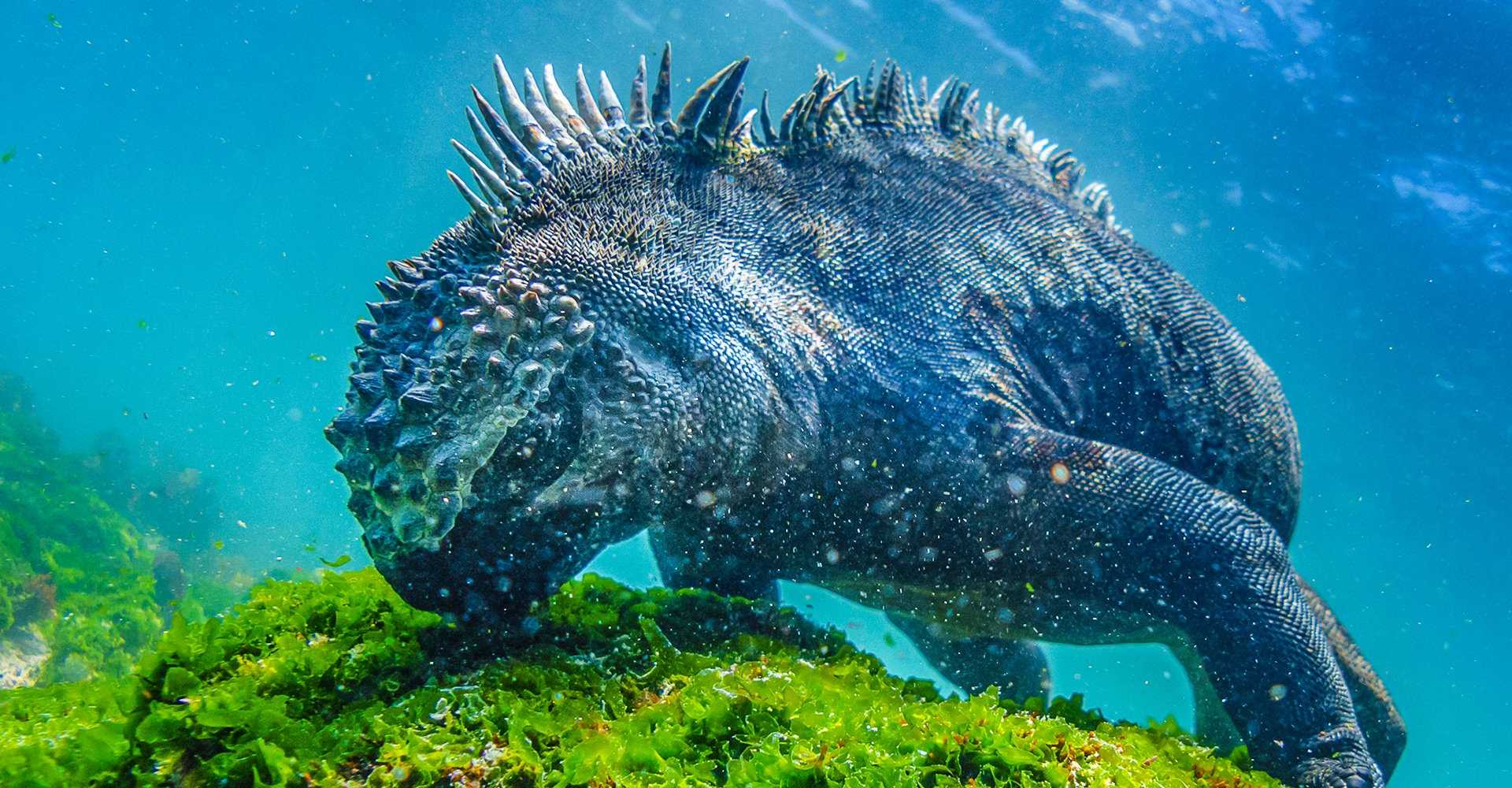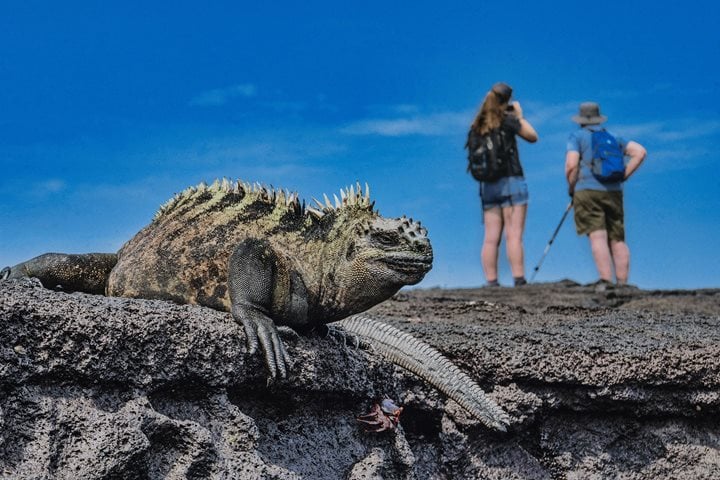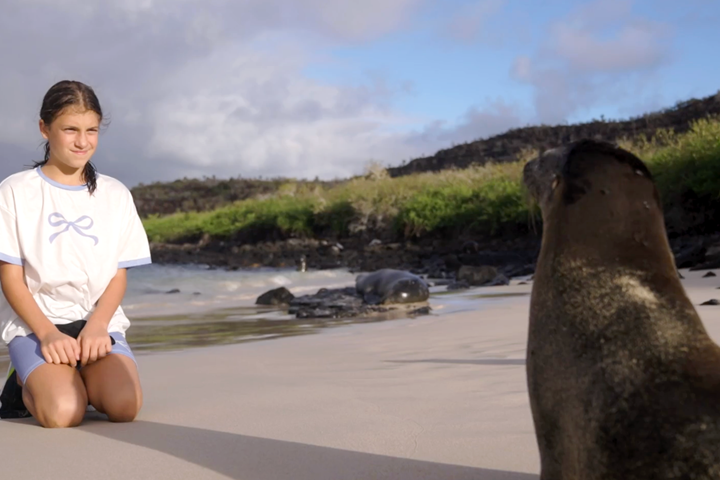Marine iguanas have taken their share of verbal barbs. Even Charles Darwin described them in his journal as “disgusting, clumsy lizards” and said someone else referred to them as “imps of darkness.” But despite their frightening demeanor these docile herbivores pose no threat. In fact, like most wildlife in Galápagos, they nonchalantly go about their business—unfazed by humans passing among them.
Get Inspired by Photos, Videos, Webinars, Stories, and Exclusive Offers.
Sign Up
As their name suggests marine iguanas have a unique claim to fame—they’re the world’s only swimming lizards! Foraging for algae and seaweed, larger animals dive down to 50 feet and feed for up to 20 minutes; smaller individuals feed on the exposed intertidal region. An array of unique adaptations helps them survive—from a flattened tail, adapted for swimming, to long claws that grip tightly to the sea floor in wave-washed tidal areas. A blunt face and unique jaw and tooth structure are also well adapted to scraping plant life off the rocks.
But one of their most interesting adaptations is their ability to conserve energy and heat by dropping their heart rate and metabolism in half when submerged for periods of time. After a dip in the chilly ocean, marine iguanas can lose up to 50°F of body heat. That’s why on land you’ll frequently find them lounging in the sun, soaking up rays to warm up before their next dive. They often live in large colonies, where it’s common to see them piled on top of one another—another smart trick for conserving heat.
Learn more facts about this surprising swimmer.








